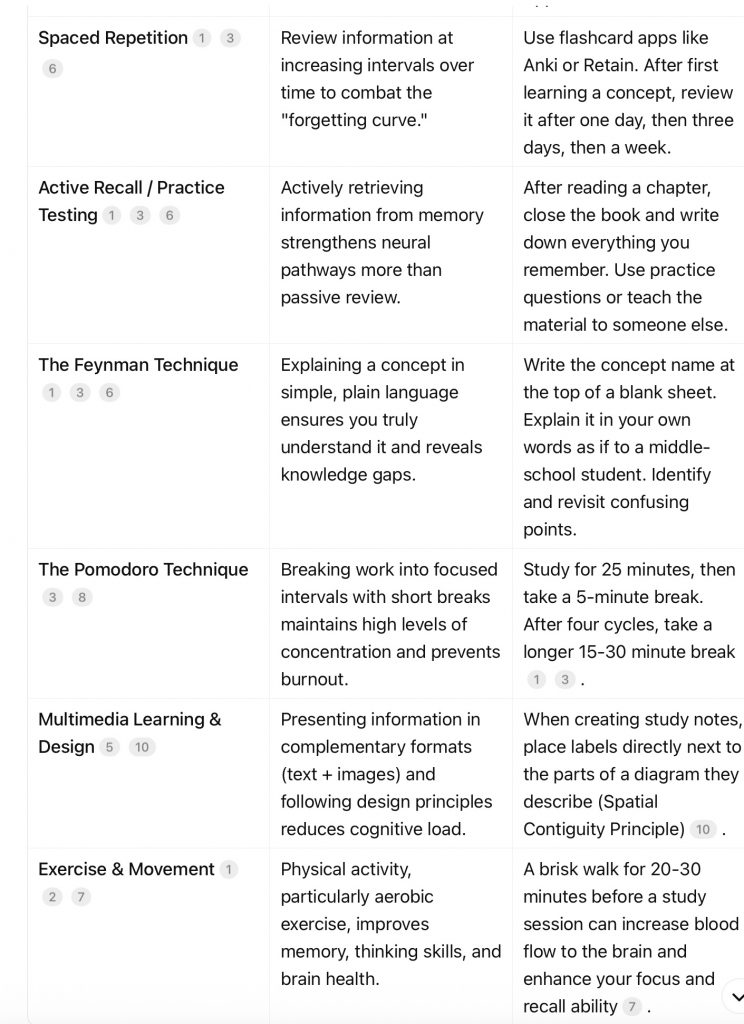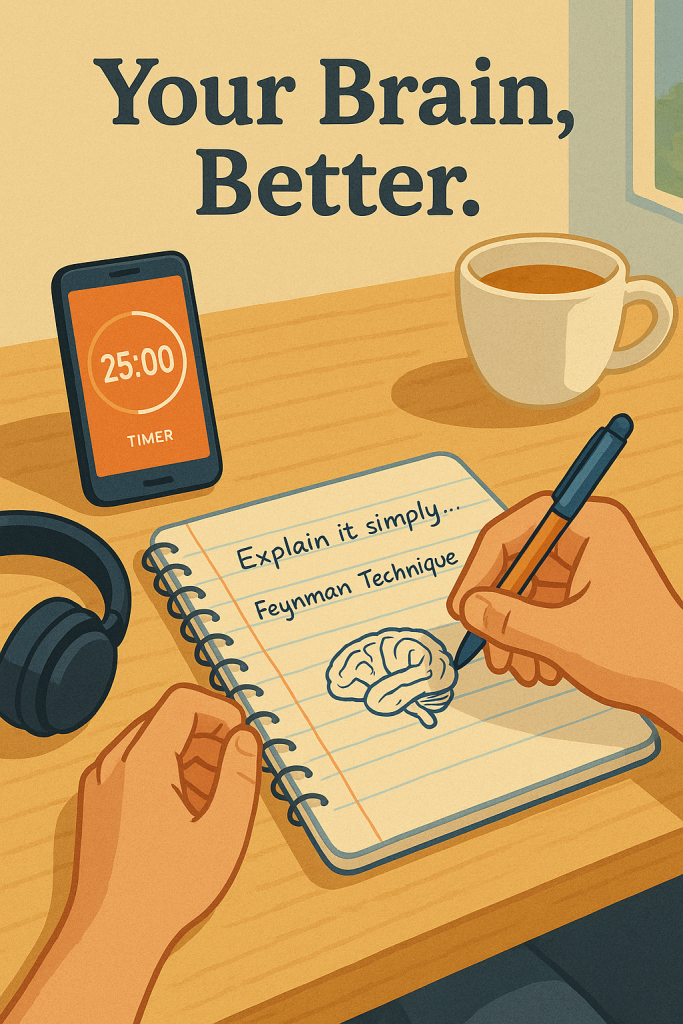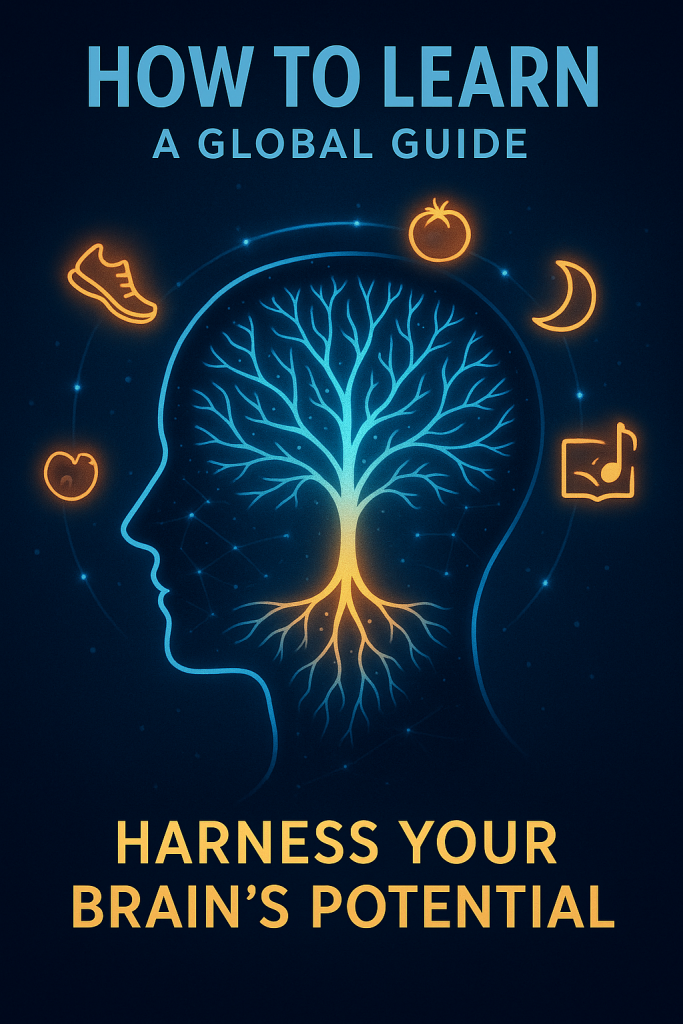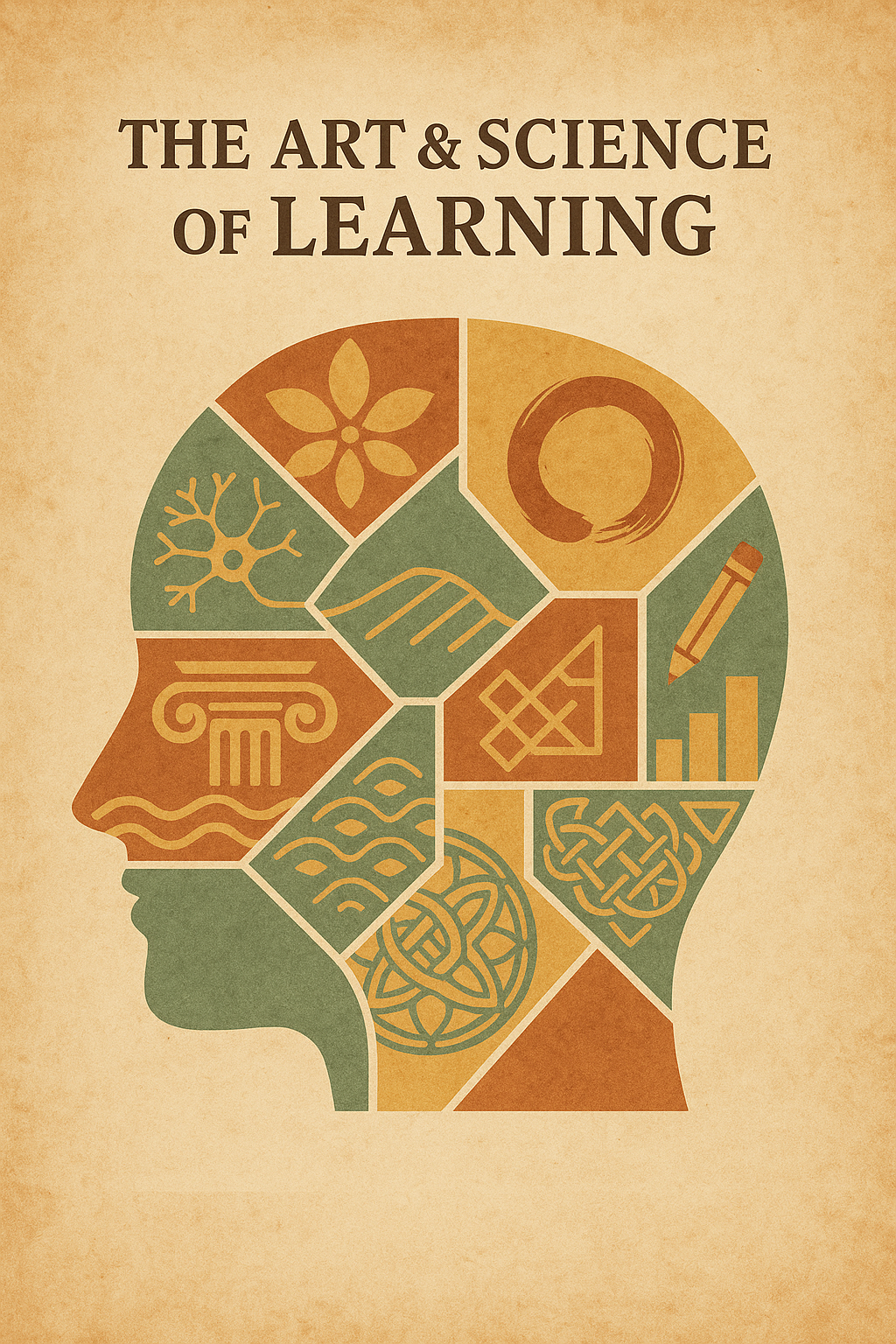Based on evidence from educators, psychologists, and neuroscientists, certain techniques can significantly enhance your ability to learn and retain information. The guide below synthesizes effective strategies from around the world, supported by both scientific research and practical application.
Ae Guide to Evidence-Based Learning Techniques


To help you navigate, here is a summary of core techniques that you can adapt to your learning routine.
Technique Core Principle Example & Practical Application
Spaced Repetition Review information at increasing intervals over time to combat the “forgetting curve.” Use flashcard apps like Anki or Retain. After first learning a concept, review it after one day, then three days, then a week.
Active Recall / Practice Testing Actively retrieving information from memory strengthens neural pathways more than passive review. After reading a chapter, close the book and write down everything you remember. Use practice questions or teach the material to someone else.
The Feynman Technique Explaining a concept in simple, plain language ensures you truly understand it and reveals knowledge gaps. Write the concept name at the top of a blank sheet. Explain it in your own words as if to a middle-school student. Identify and revisit confusing points.

The Pomodoro Technique Breaking work into focused intervals with
short breaks maintains high levels of concentration and prevents burnout. Study for 25 minutes, then take a 5-minute break. After four cycles, take a longer 15-30 minute break.
Multimedia Learning & Design Presenting information in complementary formats (text + images) and following design principles reduces cognitive load. When creating study notes, place labels directly next to the parts of a diagram they describe (Spatial Contiguity Principle)
Exercise & Movement Physical activity, particularly aerobic exercise, improves memory, thinking skills, and brain health. A brisk walk for 20-30 minutes before a study session can increase blood flow to the brain and enhance your focus and recall ability.
The Science and Global Philosophy of Effective Learning
The techniques in the table are effective because they align with how the human brain naturally processes and stores information.
· Harnessing Brain Biology for Learning

· The Role of BDNF: Activities like moderate-to-vigorous aerobic exercise stimulate the release of Brain-Derived Neurotrophic Factor (BDNF), a key protein that supports the survival of existing neurons and encourages the growth of new ones, fundamentally enhancing your brain’s plasticity—its ability to adapt and learn.
· Building Stronger Neural Connections: Techniques like Active Recall and Spaced Repetition work because they force your brain to work hard to retrieve information. This effortful process strengthens the synaptic connections between neurons, making the memory more durable and easier to access in the future.
· Optimizing Your Cognitive Load
· The Principle of Less is More: Your working memory has limited capacity. The Cognitive Theory of Multimedia Learning explains that effective learning happens when you intelligently manage this load. Principles like Spatial Contiguity (placing words near corresponding graphics) and Coherence (removing extraneous material) help your brain spend its energy on understanding rather than on searching for or filtering information.
· Focused vs. Diffuse Thinking: Techniques like the Pomodoro Technique honor the brain’s need for both focused effort and restorative breaks. The focused 25-minute session is for intense concentration, while the break allows your mind to enter a “diffuse mode,” where it can subconsciously make connections and consolidate what you’ve learned.
· Wisdom from Diverse Practitioners
· The Socratic Method & The Feynman Technique: The ancient Greek philosopher Socrates taught that true knowledge comes from questioning and examining one’s own understanding. The modern Feynman Technique is a direct application of this philosophy—if you cannot explain it simply, you do not understand it well enough.
· The Japanese Concept of “Kaizen” (Continuous Improvement): The Pomodoro Technique, with its focus on small, manageable intervals of work, aligns perfectly with the philosophy of “Kaizen,” or continuous improvement through small, consistent steps. It makes daunting tasks feel achievable and builds momentum.
· The Med Student’s Laboratory: Medical students worldwide, who face vast amounts of information, have largely standardized around Active Recall and Spaced Repetition (often using tools like Anki) as the most efficient and evidence-based way to achieve mastery. Their success under extreme pressure is a powerful testament to these methods’ effectiveness.
How to Start Your Learning Journey
· Start Small and Experiment: Don’t try to implement everything at once. Choose one or two techniques from the table that resonate with you. You might start with the Pomodoro Technique to build your focus stamina and incorporate Active Recall in your next study session by using flashcards.
· Listen to Your Brain and Body: The research is clear—prioritize sleep and exercise. They are not luxuries but critical components of the learning process, directly influencing memory consolidation and cognitive function.
· Focus on Understanding, Not Just Memorizing: Use the Feynman Technique as a regular check-up for your knowledge. If you can teach it to a friend or even just to your wall in simple terms, you truly know it.
The most effective learners are not necessarily those with a “natural gift,” but those who have learned how to learn. By understanding the principles behind these techniques, you can adapt them to your own style and become a more resilient and successful learner.
This is outline of the guide, learning how to learn.
If any particular technique, such as the neuroscience behind BDNF or the specifics of the Pomodoro method, piques your interest, I can provide you with a more detailed exploration in next post.
Will continue………
